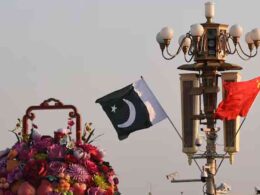In a significant move toward accommodating religious and cultural practices, the Bangladesh Armed Forces have officially allowed female military personnel to wear the hijab as part of their uniform. This new directive marks a progressive step for the nation’s military, which previously did not permit women in uniform to wear headscarves.
The announcement, made by the Adjutant General’s (AG) Office of the Bangladesh Army, was shared with the public through Bangladeshi media. According to local reports, the decision was reached earlier this month, with the policy allowing women officers, soldiers, and armed forces nursing staff to wear hijabs that match their specific military uniforms. The hijab can now be worn with various forms of dress, including combat uniforms, working dress, and sarees, as outlined in the new guidelines.
A Historic Shift in Policy
The ban on wearing hijabs within the Bangladeshi military had been a topic of contention for years, with growing calls for greater religious inclusivity in uniform regulations. Prior to this ruling, female personnel were not permitted to wear any form of headscarf, which restricted many women from freely observing their religious practices while on duty.
As per the reports from the local news agency Bdnews24, the decision was officially agreed upon in principle by the AG’s office on September 3, 2024. This directive is expected to provide greater flexibility and cultural inclusivity within the armed forces, aligning the military with broader societal norms in Bangladesh, where the hijab is commonly worn by Muslim women as an expression of faith.
The move is seen as an important step towards empowering female members of the armed forces, giving them the opportunity to maintain their religious beliefs while serving their country. Military officials believe this will encourage more women to join the armed forces without feeling that their religious values may be compromised.
Hijab Policy and Guidelines
The implementation of this policy has been carefully planned, with the AG’s office providing detailed instructions on how the hijab will be incorporated into the uniform. According to the guidelines, female military personnel will be required to ensure that the hijab matches the specific uniform they are wearing. This includes considerations regarding the type of fabric, color, and precise measurements to ensure that the hijab fits seamlessly into the military dress code.
The hijab policy covers all uniform types, including the combat uniform worn during field operations, working dress for daily military duties, and the traditional saree uniform for formal occasions. The AG’s office has also issued a directive for female personnel to submit photographs of themselves wearing the proposed hijabs with their uniforms by September 26, 2024, for final review.
This policy review and sample submission process will allow military authorities to refine the hijab design and ensure that it meets both operational requirements and aesthetic standards, while also respecting the religious principles it represents.
A Step Toward Greater Inclusion
The decision to allow the hijab in military uniforms is being lauded by human rights groups and religious organizations in Bangladesh. Many see it as a win for gender equality and religious freedom within the armed forces, as it eliminates the barrier that previously prevented some women from fully participating in military service.
Military experts believe this change could have far-reaching effects, inspiring other countries in South Asia and beyond to consider similar policies. In a region where cultural and religious attire plays a significant role in daily life, such inclusivity within the military is seen as a positive step forward.
While some critics argue that mixing religious attire with military uniforms could potentially undermine the uniformity and discipline that are core to military service, the majority response has been supportive. The hijab, when properly integrated into the uniform, is not expected to hinder the performance or professionalism of the female soldiers, according to the AG’s office.
International Context
The decision by Bangladesh to allow the hijab in its military uniforms follows a trend seen in other countries around the world. Several nations, including Canada, the United States, and the United Kingdom, have already adopted policies allowing women in the armed forces to wear religious head coverings, including the hijab, turban, and yarmulke.
As global military organizations increasingly recognize the importance of diversity and inclusion, Bangladesh’s decision marks a significant moment for South Asian militaries. It signals a shift towards greater respect for individual religious practices within the context of national service.











